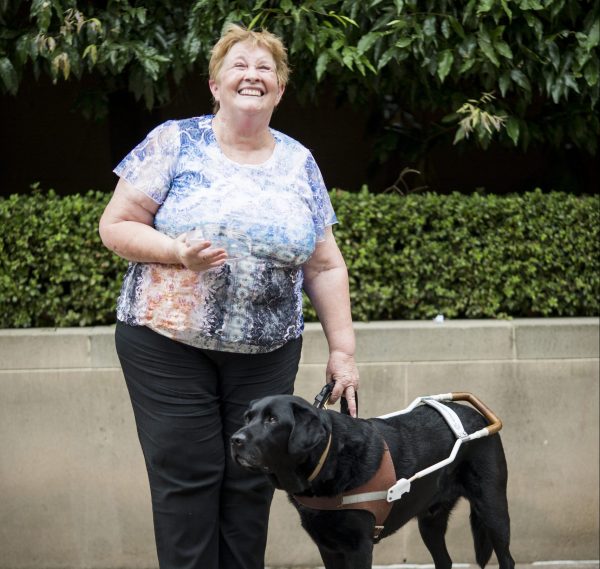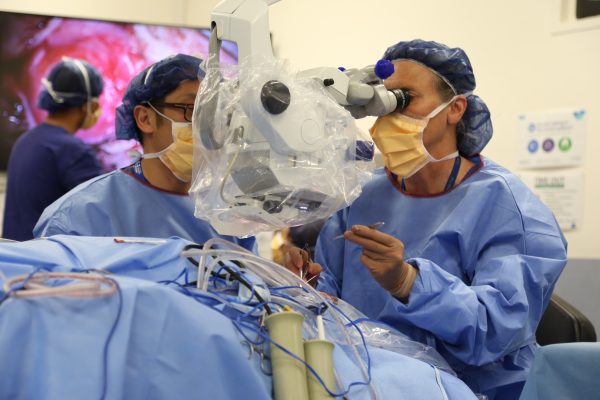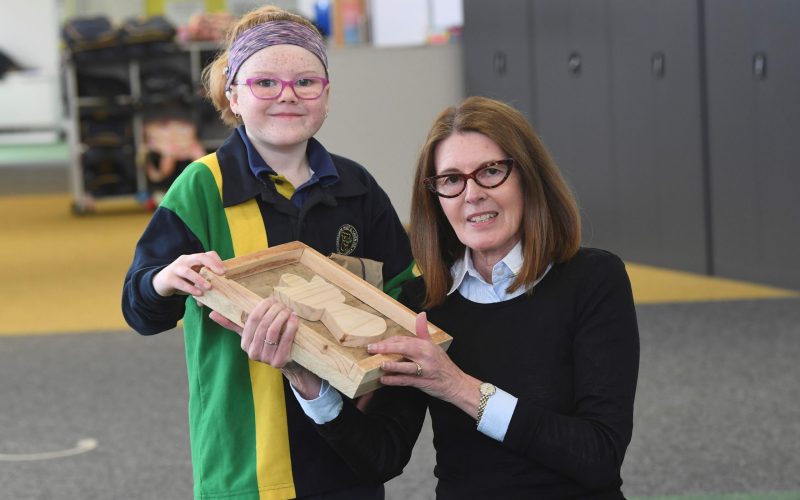In 2012, led by the Centre for Eye Research Australia, the Bionics Institute, The University of Melbourne, the University of New South Wales and NICTA (Bionic Vision Australia) in collaboration with the Eye and Ear, the bionic eye was born, leading the way for vision loss innovation in Australia. Fast-forward to 2021, with the completion of second-generation trials, participants can now use the device to perform every-day activities in and out of the home.
The retina-based technology, developed in partnership with Bionic Vision Technologies, means that eligible participants need to have been able to see at some point in their lives. In 2018, four patients commenced the two year trial, which included assessment, surgery, device switch on, training to learn how to interpret the device feedback, and testing in and out of the home.
The hospital has been instrumental in preparing for the first-in-human surgeries, and in the postoperative care of the participating patients. When developing the surgical approach, the trial saw a unique collaboration between eye surgeons and ENT surgeons. In particular, Professor Robert Briggs and his extensive experience with cochlear implants made this collaboration successful.
“The patients that volunteer to be a part of the trial are incredibly altruistic. While optimistic, we weren’t sure if the bionic eye would work for them and could not provide this guarantee during the consent process. The main driver for them was to help other people and pave the way for the future,” explains Associate Professor Penny Allen, who led the surgical team that implanted Australia’s first bionic eye.
Trial participant Colleen Knowles was born with a condition called Cone-Rod Dystrophy a condition that affects the retina and wore glasses when she was a child. In her teens she had around 20 per cent vision, but it wasn’t until Colleen hit her early 30s did she realise the full severity of her vision loss and decided to seek assistance, this is when she received her first guide dog.

“It’s an absolute privilege to be a part of this trial as I see this as history-making. It has been an opportunity for me to help improve the lives of other vision-impaired people in the future,” explained Colleen.
The second-generation device aims to create a ‘sense of vision’ for the participants, enhancing their visual experience alongside the use of their regular aid, a cane or a guide dog, ultimately improving their overall navigation and increasing their independence.
“Essentially, the device takes video from a small camera attached to the glasses, this information is then converted into electrical stimulation that travels via a lead to the device implanted within the eye, stimulating the residual retinal tissue. The brain then interprets this as different flashes of light,” explains Associate Professor Allen.

After receiving her surgery at the Eye and Ear and following a successful recovery, it was time to switch on the device and understand if it had worked for each participant.
“Switch on day was very exciting. I was worried it hadn’t worked and then all of a sudden, there it was, I could see it, the flashes of light appeared. From then, it was all about learning to interpret the light, depending on its shape, size, and brightness. Over time, more often than not, I have been able to determine what an object is based on the feedback I receive from the device,” said Colleen.
Colleen spends her time with her husband and family, and as a grandmother of 15 and a great-grandmother of three she is kept very busy. Colleen also enjoys knitting, singing in her community choir and reading, getting through an impressive 60 audiobooks per year.
“Testing the device at home and outside has been really interesting and has certainly improved my navigation. I find them the most valuable when I am out and about. It doesn’t replace natural vision, but it does enhance my experiences and creates a more engaging environment. I hope to be a part of future developments of the device,” explained Colleen.
“This Australian-developed device is more advanced than any in the world,” CEO of Bionic Vision Technologies, Ash Attia, said. “The goal is an affordable cochlear-style implant for millions of people globally who suffer from a genetic condition that robs them of their sight.”
The initial success of the second-generation trial could mean commercial access to the bionic eye is closer than we think, with planning currently underway for the next phase of the trial to further develop the device’s visual processing.


